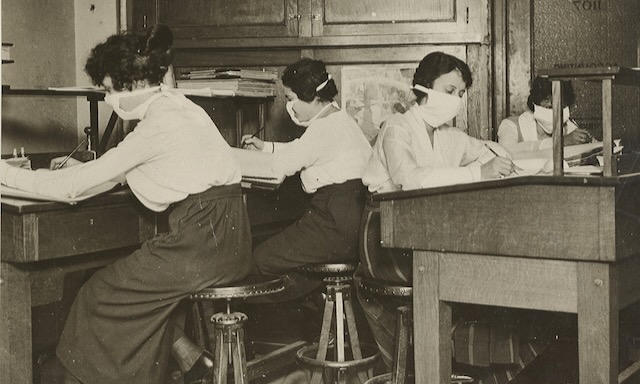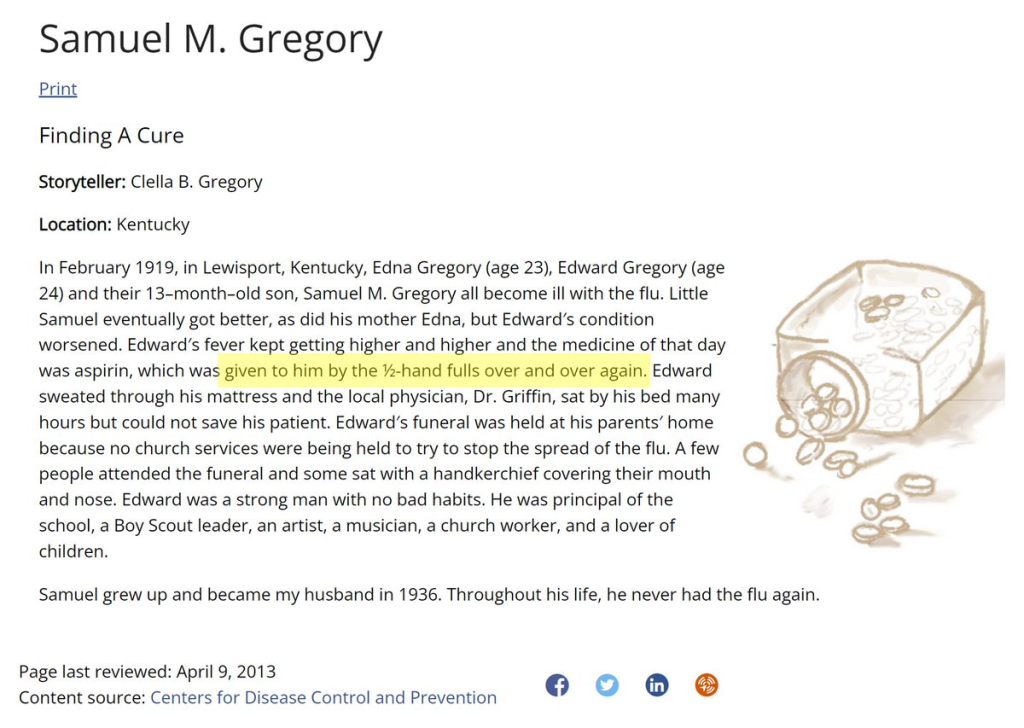
What really happened that created this phantom behemoth?
Also available on Substack – Come and join the conversation with open comments
Every time someone tries to whip up a frenzy about a new bug the 1918 influenza pandemic will be referenced. People will say there were a huge number of deaths including of the young and therefore you must be terrified. But what if this whole story was not what it seems?
The novel virus lie
1918 influenza did not spread like a tsunami as if everyone was susceptible. It came in 3 waves affecting 11% of the population each time. The deaths were spread over two years.
Similarly, seasonal influenza infect 5-15% of the population with each wave as does SARS-CoV-2.
The huge number of deaths
Kate Bingham trotted out the line that 50 million people died of the 1918 flu. (She also threw in that 20 million had died of COVID for good measure when the official figure is 6 million).
But 50 million is a lie.
Wellcome Trust would claim it was too low. In fact they claim the total was a stratospheric 100 million.
There were 1.8 billion people, of whom 600 million were infected. If 100 million really did die, that would mean an infection fatality rate of 1 in 6! If 50 million died, it would be an infection fatality rate of 1 in 12. Both are ludicrous claims that do not match with reality.
The consensus from every reasonable measure is that 1-3% of the infected died. This figure was based on extrapolating backwards from hospital fatality rates – people a hundred years ago were already very good at recording deaths and statistics.
Based on a mortality rate of 1-3% the deaths would have amounted to 6-18 million, still bad, but a fraction of the claim.
Estimates at the time were in that range. The US estimated 675,000 deaths from a population of 103 million. That means 0.65% of the population died.
The estimates for global mortality were exaggerated right from the start. China and Japan did not have the same problem as the West. However, when calculating global mortality it was assumed such places had fared as badly or worse than the USA and Europe. Consequently, modelling from 1920 already exaggerated deaths to 20 million globally.
Deaths in the young
Importantly there was more than one way to die in 1918. Some developed a viral pneumonia and then a bacterial pneumonia and then died. But there were unusual deaths in the young – unlike other pneumonias.
The second way to die was to develop a blue tinge – “heliotrope cyanosis” and then to die quite rapidly with haemorrhagic wet lungs. This is not the typical picture for a viral death.
Some have suggested other causes e.g. war related chemical exposure. There were huge movements of poorly nourished troops living in unsanitary conditions and thinking this was not a factor is surely naive. At the time there was a belief that influenza was a bacterial disease and a variety of bacterial based “vaccines” were concocted and injected during the second two waves. Whether that contributed to the harm is uncertain, other vaccines result in a temporary immune deficit to fight off infection, but it certainly couldn’t have helped. But aspirin toxicity is the most compelling argument.
Aspirin was new and was presented as the saviour drug. It was widely given in toxic doses of 8 to 31 grams per day, far beyond today’s maximum recommended dose of around 4 grams. It is now known that high doses can lead to lung damage, fever, seizures and death. The more fever the more aspirin would be given.
This story epitomises the problem:

1918 was a story of iatrogenic harm (harm caused by medics). And yet it is being used to promote yet more iatrogenic harm. Do not be scared of 1918. It did not happen the way it was presented.

When looking at the bigger picture, 1918 does stand out as a bad year for deaths – as bad as 20 years before but better than almost every year preceding that.
The people exaggerating the claims about it all have something to gain from doing so. That’s how the deaths rose from 20 million (which assumed higher mortality in China and Japan than USA!) to 50-100 million. Stop believing them!
